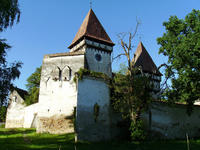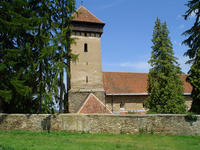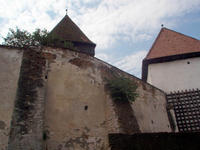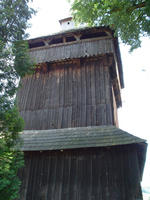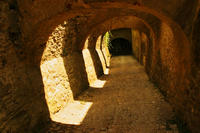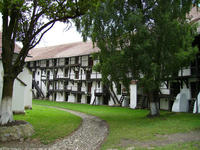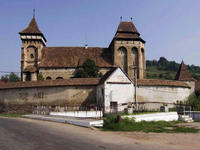You are in: Europe -> Romania -> Villages with Fortif... , and traditional search or Image Gallery will yield results of this site only
Villages with Fortified Churches in Transylvania
| Site number: | 596 |
|
| Type of site: | Cultural | |
| Date: | 13-16th century | |
| Date of Inscription: | 1993, 1999 | |
| Location: | Europe, Romania, Region of Transylvania, Counties of Alba, Brasov, Harghita, Mureş, Sibiu | |
Up to 75 images are shown here. Click on each for more details or on Image Gallery for more images.
| Description: | Offering a vivid illustration of southern Transylvania’s cultural landscape are the site’s Transylvanian villages with their fortified churches. The seven inscribed villages that were founded by the Transylvanian Saxons and have been preserved since the late Middle Agess, are characterized by a particular land-use system, settlement pattern and family farmstead organization. Their fortified churches, which exemplify13th to the 16th century building styles, dominate the site. --WHMNet paraphrase from the description at WHC Site, where additional information is available. | |
| Transylvanian villages were often organized around a fortified church. Currently, a group of six former Saxon and one Székely villages is listed as a UNESCO World Heritage Site: The Saxon villages of Transylvania appeared in the 13th century when the Kings of Hungary settled German colonists in the area. They had a special status among nations in the province and their civilization managed to survive and thrive, forming a very strong community of farmers, artisans and merchants. Being situated in a region constantly under the threat of the Ottoman and Tatar invasions, they built fortifications of different sizes. The most important towns were fully fortified, and the smaller communities created fortifications centered around the church, where they added defensive towers and storehouses to keep their most valuable goods and to help them withstand long sieges. The topography in Southern Transylvania is that of a plateau, cut by wide valleys of various small rivers that flow into larger ones, namely the Olt River, Mureş River, Târnava Mare River and Târnava Mică River. The villages follow the topography closely and try to make the best of it; thus villages situated in a valley developed around a central street and possibly some secondary ones, while those situated on a flatter spot follow a looser, radial pattern. Due to security reasons and the traditions of the Saxon inhabitants, the villages are compact. The main element is the church, always situated in the middle of the town. Different types of fortifications can be found: a small enceinte around the church, a row of fortifications around the church or a real fortress with multiple fortification walls centered on the church. The churches have been adapted to include defensive functions; all of them are either Romanesque basilicas or single-nave churches of the late Gothic period. The churches often include many additions, ranging in age from the original period in which the churches were built Late Middle Ages to the 16th century. Many churches also include baroque elements from that period, as the baroque style was very popular in the region. In almost all cases, the church is situated in an easily defendable position, generally on a hilltop. Elements of fortifications found in the main cities in the area have been adapted here, and they are a testimony of the building techniques used along the years by the Saxon community. Some fortifications had observations towers, some of them being church towers adapted to the needs of a fortress. The materials are the traditional ones, stone and red bricks, with a red clay tiled roof, a typical feature of the area. Close to the church there is the main square of the village or Tanzplaz (Dance Square) around which the social life gravitated. The only buildings situated next to the fortifications are those of communal use: the school or the village hall. The parish house, along with the houses of the most wealthy villagers, were situated around this square. Also in most sites, barns for grain storage are situated close to the centre of the village. --Wikipedia. Text is available under the Creative Commons Attribution-ShareAlike License. | ||
| Source: | http://whc.unesco.org/en/list/596 | |
| Reference: | 1. UNESCO World Heritage Center, Site Page. | |









